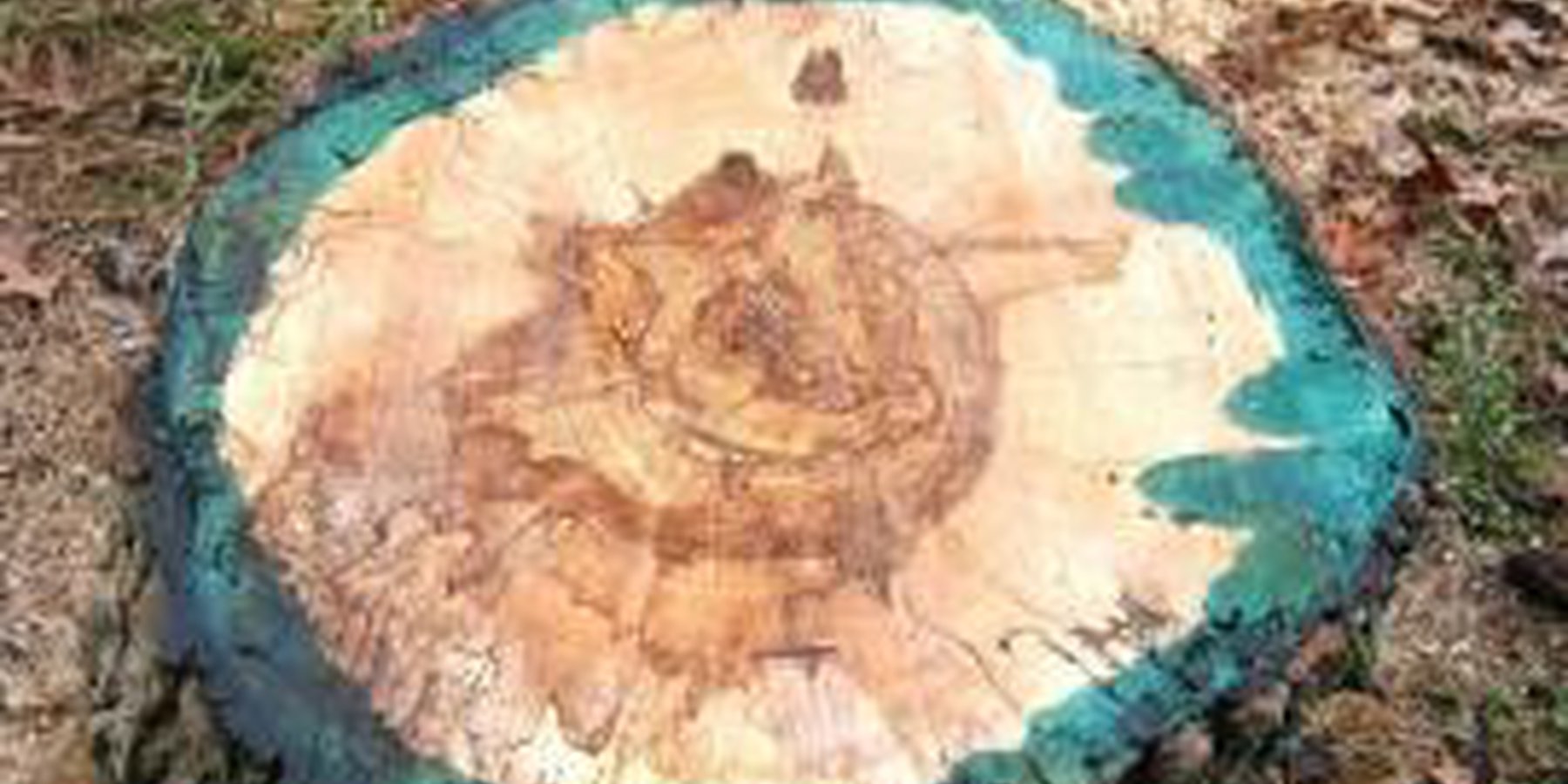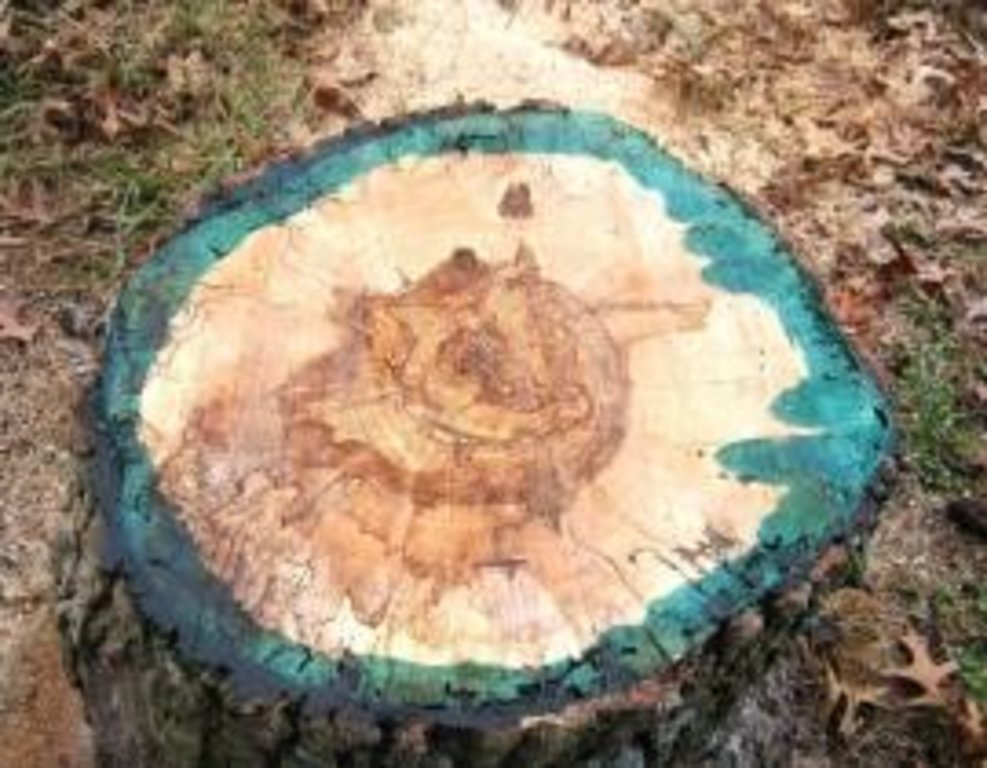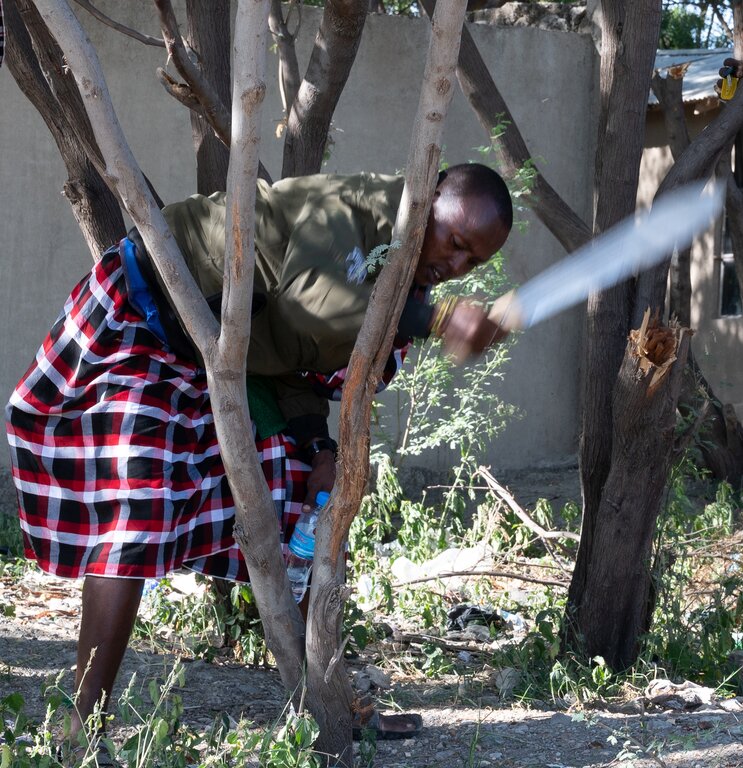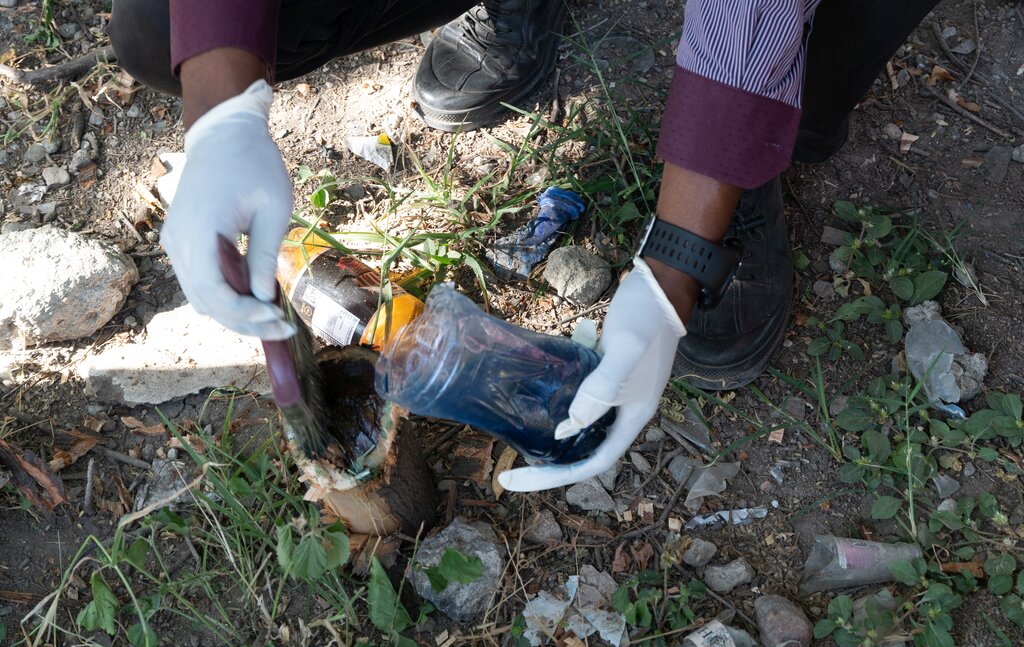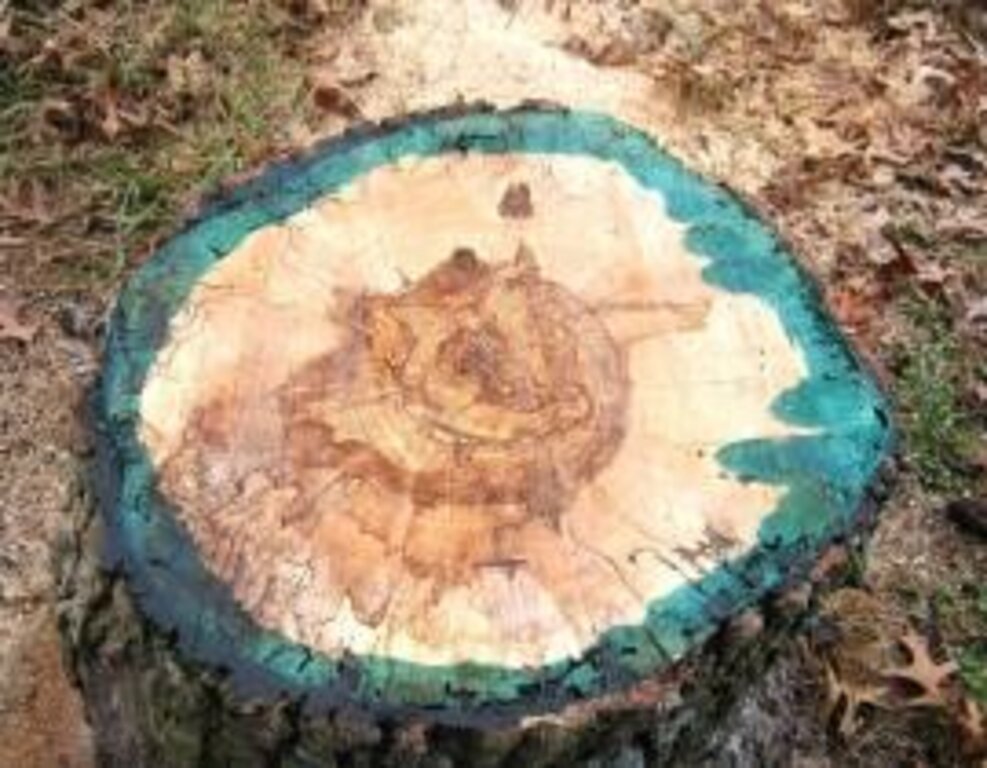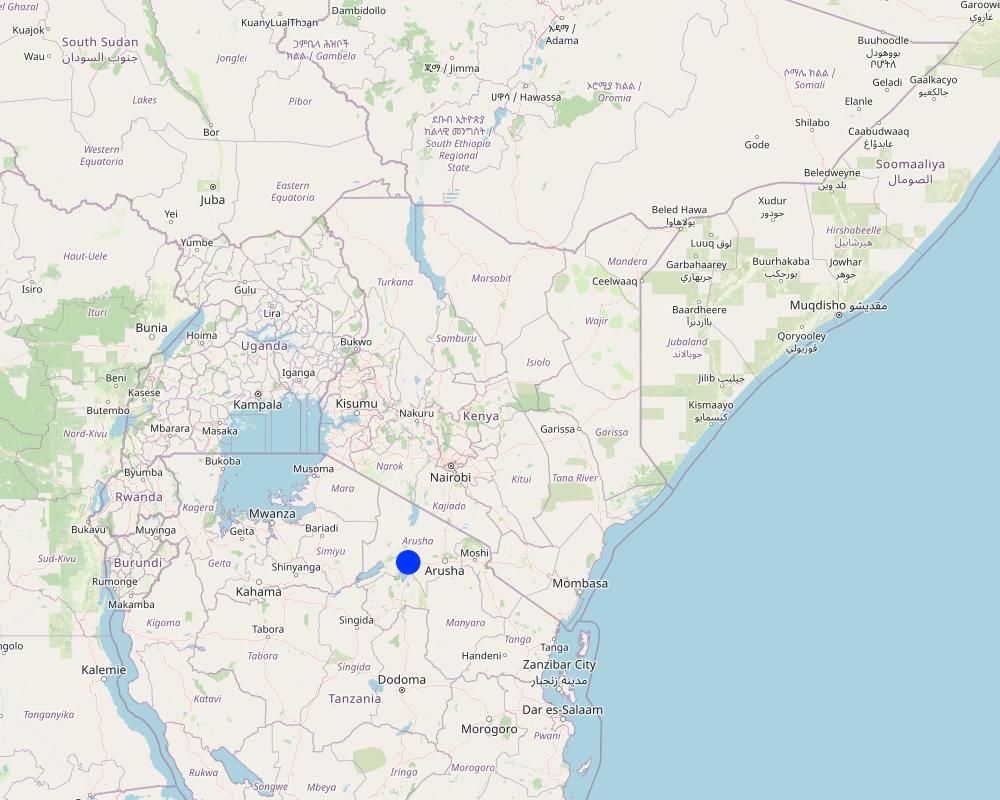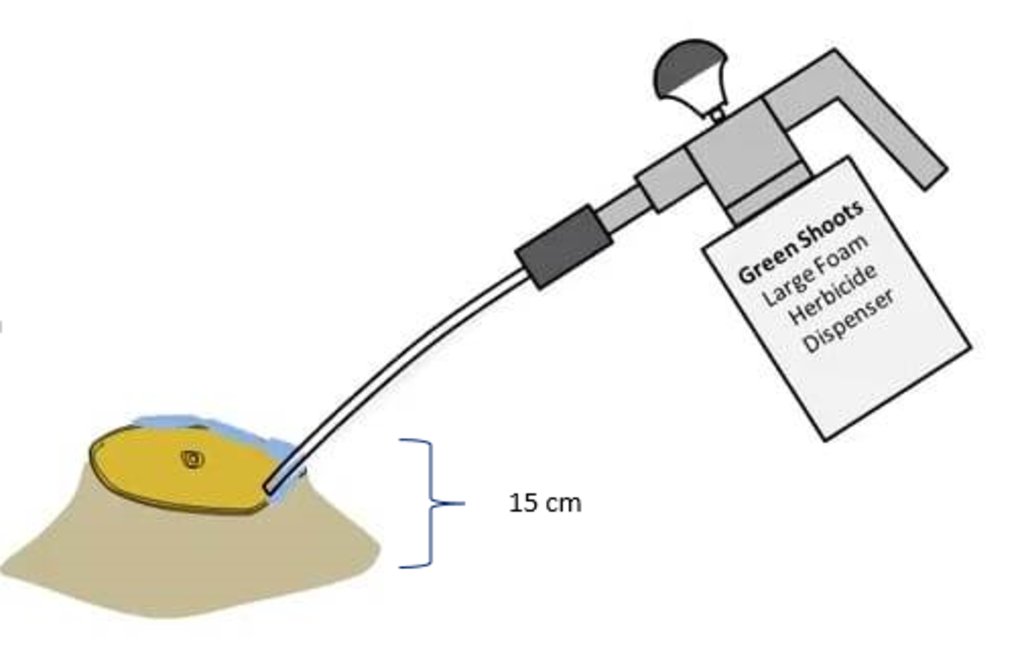Cut-stump treatment [Kenya]
- Creation:
- Update:
- Compiler: Beatrice Otieno
- Editors: Albrecht Ehrensperger, Urs Schaffner, Urs Baumgartner, Beatrice Otieno, Megersa Birhanu, Gizaw Desta Gessesse, Christian Hergarten
- Reviewer: Ross Shackleton
technologies_3866 - Kenya
View sections
Expand all Collapse all1. General information
1.2 Contact details of resource persons and institutions involved in the assessment and documentation of the Technology
Key resource person(s)
SLM specialist:
Name of project which facilitated the documentation/ evaluation of the Technology (if relevant)
R4D Woody WeedsName of the institution(s) which facilitated the documentation/ evaluation of the Technology (if relevant)
CDE Centre for Development and Environment (CDE Centre for Development and Environment) - Switzerland1.3 Conditions regarding the use of data documented through WOCAT
The compiler and key resource person(s) accept the conditions regarding the use of data documented through WOCAT:
Ja
1.4 Declaration on sustainability of the described Technology
Is the Technology described here problematic with regard to land degradation, so that it cannot be declared a sustainable land management technology?
Nee
2. Description of the SLM Technology
2.1 Short description of the Technology
Definition of the Technology:
To manage single-stemmed invasive Prosopis juliflora trees, it's advised to use the cut-stump treatment. This involves cutting the tree at its base (≤ 15cm above the ground) and applying a suitable herbicide to the freshly cut stump, focusing on the root collar, stump sides, and outer cut surface.
2.2 Detailed description of the Technology
Description:
Cut-stump technology is a suitable method for killing unwanted woody trees and weeds using cutting and herbicide. It involves the cutting of the target tree not more than 15 cm from the ground followed by spraying or painting the freshly cut stump surface, the stump and root collar with the herbicide. Tordon (Picloram 65g/l + 2,4-D 240g/l) is usually mixed with an oil-based substance such as diesel and applied immediately and not more than 15 minutes after cutting for best results to be achieved. Oil-based solvents act as penetrants increasing the rate of chemical absorption by the plants. For mature trees with wide diameters, the cambium at the edge of the cut stump is usually targeted in addition to the cut surface to kill the roots and stems hence prevent regrowth. The area should be fully wet with herbicide, but not so much that it induces runoff. This approach should be avoided in times of heavy rain which could prevent the herbicide from reaching the ground line. It is suitable where the density of the target invasive plant is low.
2.3 Photos of the Technology
2.5 Country/ region/ locations where the Technology has been applied and which are covered by this assessment
Country:
Kenya
Region/ State/ Province:
Baringo, Isiolo
Map
×2.6 Date of implementation
If precise year is not known, indicate approximate date:
- less than 10 years ago (recently)
2.7 Introduction of the Technology
Specify how the Technology was introduced:
- during experiments/ research
- through projects/ external interventions
3. Classification of the SLM Technology
3.1 Main purpose(s) of the Technology
- reduce, prevent, restore land degradation
- preserve/ improve biodiversity
3.2 Current land use type(s) where the Technology is applied

Forest/ woodlands
(Semi-)natural forests/ woodlands:
- Selective felling
Products and services:
- Nature conservation/ protection
3.3 Further information about land use
Water supply for the land on which the Technology is applied:
- rainfed
Number of growing seasons per year:
- 3
3.4 SLM group to which the Technology belongs
- ecosystem-based disaster risk reduction
3.5 Spread of the Technology
Specify the spread of the Technology:
- applied at specific points/ concentrated on a small area
3.6 SLM measures comprising the Technology

vegetative measures
- V4: Replacement or removal of alien/ invasive species

management measures
- M5: Control/ change of species composition
3.7 Main types of land degradation addressed by the Technology

biological degradation
- Bh: loss of habitats
- Bs: quality and species composition/ diversity decline
Comments:
Beyond this, the technology also preserves the provision of ecosystem services related to grazing and water - both are considered crucial for pastoral and agricultural land use / livelihoods in Northern Kenya.
3.8 Prevention, reduction, or restoration of land degradation
Specify the goal of the Technology with regard to land degradation:
- reduce land degradation
- restore/ rehabilitate severely degraded land
Comments:
Land infested by Prosopis is considered degraded. The spread of invasive species e.g. Prosopis leads to "vegetation degradation".
4. Technical specifications, implementation activities, inputs, and costs
4.1 Technical drawing of the Technology
4.2 Technical specifications/ explanations of technical drawing
The target tree is cut above the ground, usually 15 cm, after which a pressurized spray or painting brush is used to apply a herbicide around the freshly cut surface. The cambium should be targeted for trees with wider diameters to facilitate absorption of the herbicide solution to the roots.
4.3 General information regarding the calculation of inputs and costs
Specify how costs and inputs were calculated:
- per Technology unit
Specify unit:
Plot
Specify volume, length, etc. (if relevant):
10m by 10m plot with Prosopis cover of more than 80% or comparable density
other/ national currency (specify):
Kenyan Shilling
Indicate exchange rate from USD to local currency (if relevant): 1 USD =:
100.0
Indicate average wage cost of hired labour per day:
300 per person
4.4 Establishment activities
| Activity | Type of measure | Timing | |
|---|---|---|---|
| 1. | Cutting the tree stump | Management | 10 minutes |
| 2. | Applying herbicide | Management | 6 minutes |
4.5 Costs and inputs needed for establishment
| Specify input | Unit | Quantity | Costs per Unit | Total costs per input | % of costs borne by land users | |
|---|---|---|---|---|---|---|
| Labour | Cutting and treating tree stumps | man days | 10.0 | 300.0 | 3000.0 | 100.0 |
| Equipment | Power saw | |||||
| Fertilizers and biocides | Tordon chemical (www.desertcart.co.ke) | 32 oz bottle | 1.0 | 10689.0 | 10689.0 | 100.0 |
| Fertilizers and biocides | Diesel | liter | ||||
| Total costs for establishment of the Technology | 13689.0 | |||||
If land user bore less than 100% of costs, indicate who covered the remaining costs:
In some cases, development projects may cover the costs for the herbicide.
Comments:
The herbicide seems to be available in Kenya in 32 oz bottles.
4.6 Maintenance/ recurrent activities
| Activity | Type of measure | Timing/ frequency | |
|---|---|---|---|
| 1. | Control of the stump, recut and retreat if necessary | Management | after every 3 months |
5. Natural and human environment
5.1 Climate
Annual rainfall
- < 250 mm
- 251-500 mm
- 501-750 mm
- 751-1,000 mm
- 1,001-1,500 mm
- 1,501-2,000 mm
- 2,001-3,000 mm
- 3,001-4,000 mm
- > 4,000 mm
Specify average annual rainfall (if known), in mm:
671.00
Specifications/ comments on rainfall:
Annual rainfall of 671 mm characterized by seasonal fluctuations.
Agro-climatic zone
- semi-arid
5.2 Topography
Slopes on average:
- flat (0-2%)
- gentle (3-5%)
- moderate (6-10%)
- rolling (11-15%)
- hilly (16-30%)
- steep (31-60%)
- very steep (>60%)
Landforms:
- plateau/plains
- ridges
- mountain slopes
- hill slopes
- footslopes
- valley floors
Altitudinal zone:
- 0-100 m a.s.l.
- 101-500 m a.s.l.
- 501-1,000 m a.s.l.
- 1,001-1,500 m a.s.l.
- 1,501-2,000 m a.s.l.
- 2,001-2,500 m a.s.l.
- 2,501-3,000 m a.s.l.
- 3,001-4,000 m a.s.l.
- > 4,000 m a.s.l.
Indicate if the Technology is specifically applied in:
- not relevant
5.3 Soils
Soil depth on average:
- very shallow (0-20 cm)
- shallow (21-50 cm)
- moderately deep (51-80 cm)
- deep (81-120 cm)
- very deep (> 120 cm)
Soil texture (topsoil):
- medium (loamy, silty)
Soil texture (> 20 cm below surface):
- medium (loamy, silty)
Topsoil organic matter:
- low (<1%)
5.4 Water availability and quality
Availability of surface water:
medium
Water quality (untreated):
poor drinking water (treatment required)
Is flooding of the area occurring?
Ja
Regularity:
episodically
5.5 Biodiversity
Species diversity:
- low
Habitat diversity:
- low
5.6 Characteristics of land users applying the Technology
Sedentary or nomadic:
- Sedentary
Market orientation of production system:
- mixed (subsistence/ commercial
Off-farm income:
- 10-50% of all income
Relative level of wealth:
- poor
Individuals or groups:
- individual/ household
Level of mechanization:
- manual work
- mechanized/ motorized
Gender:
- women
- men
Age of land users:
- youth
- middle-aged
5.7 Average area of land owned or leased by land users applying the Technology
- < 0.5 ha
- 0.5-1 ha
- 1-2 ha
- 2-5 ha
- 5-15 ha
- 15-50 ha
- 50-100 ha
- 100-500 ha
- 500-1,000 ha
- 1,000-10,000 ha
- > 10,000 ha
Is this considered small-, medium- or large-scale (referring to local context)?
- medium-scale
5.8 Land ownership, land use rights, and water use rights
Land ownership:
- state
Land use rights:
- communal (organized)
Water use rights:
- communal (organized)
5.9 Access to services and infrastructure
health:
- poor
- moderate
- good
education:
- poor
- moderate
- good
technical assistance:
- poor
- moderate
- good
employment (e.g. off-farm):
- poor
- moderate
- good
markets:
- poor
- moderate
- good
energy:
- poor
- moderate
- good
roads and transport:
- poor
- moderate
- good
drinking water and sanitation:
- poor
- moderate
- good
financial services:
- poor
- moderate
- good
6. Impacts and concluding statements
6.1 On-site impacts the Technology has shown
Ecological impacts
Biodiversity: vegetation, animals
invasive alien species
animal diversity
Comments/ specify:
Prosopis is known to threaten lake shores frequented by Flamingos (e.g. Lake Bogoria)
habitat diversity
Comments/ specify:
Once prosopis is cleared, more diverse habitats may develop - however this also depends on the land management strategies.
6.2 Off-site impacts the Technology has shown
water availability
Comments/ specify:
As an evergreen species, dense prosopis stands can evaporate large amounts of water (up to 70 liters/day/tree)
If applied close to surface water, the herbizide can have detrimental impacts, therefore it is forbidden to be used close to surface water.
Comments regarding impact assessment:
The impact assessment of the technology described here should probably also be discussed in the context of what happens after the treatment of prosopis infested area - i.e. what is the cleared land used for afterwards?
6.3 Exposure and sensitivity of the Technology to gradual climate change and climate-related extremes/ disasters (as perceived by land users)
Comments:
The technology described here is not sensitive to climate change.
6.4 Cost-benefit analysis
How do the benefits compare with the establishment costs (from land users’ perspective)?
Short-term returns:
negative
Long-term returns:
positive
How do the benefits compare with the maintenance/ recurrent costs (from land users' perspective)?
Short-term returns:
slightly negative
Long-term returns:
positive
6.5 Adoption of the Technology
- single cases/ experimental
Comments:
The herbicide was not available to land users since no licenses for its use were issued in Kenya yet.
6.6 Adaptation
Has the Technology been modified recently to adapt to changing conditions?
Nee
6.7 Strengths/ advantages/ opportunities of the Technology
| Strengths/ advantages/ opportunities in the land user’s view |
|---|
| A highly selective method with minimal adverse impacts to non-targeted tree species. |
| Very effective method of killing unwanted tree species. |
6.8 Weaknesses/ disadvantages/ risks of the Technology and ways of overcoming them
| Weaknesses/ disadvantages/ risks in the land user’s view | How can they be overcome? |
|---|---|
| The herbizide should never be applied close to surface water bodies. | Proper control and training of land users |
| Weaknesses/ disadvantages/ risks in the compiler’s or other key resource person’s view | How can they be overcome? |
|---|---|
| According to some sources (e.g. Richardson 2009), costs of cut-stump treatment become prohibitive when Prosopis density is high. | Apply different methodology |
| Standing stumps hazardous risks to passers by or vehicles. | Apply fencing |
7. References and links
7.1 Methods/ sources of information
- interviews with SLM specialists/ experts
1
- compilation from reports and other existing documentation
3
7.2 References to available publications
Title, author, year, ISBN:
Anderson, L. (20111). Effective control of mesquite-pilbara tools and tips : Pilbara Mesquite Management Committee
Available from where? Costs?
http://www.aces.edu/pubs/docs/A/ANR-1465/ANR-1465-low.pdf
Title, author, year, ISBN:
Cut Stump Herbicide Treatments for Invasive Plant Control Recommendations for Homeowners
Available from where? Costs?
http://www.aces.edu/pubs/docs/A/ANR-1465/ANR-1465-low.pdf
Title, author, year, ISBN:
Hoel, S. (2015). ARE YOU USING THE RIGHT CUT STUMP HERBICIDE?
Available from where? Costs?
https://mdc.mo.gov/blogs/more-quail/are-you-using-right-cut-stump-herbicide
Title, author, year, ISBN:
The Biology of Australian Weeds. Volume 3. Published 2009 by R.G. and F.J. Richardson.
Available from where? Costs?
http://era.daf.qld.gov.au/id/eprint/1495/ (costs 85.- AUD)
7.3 Links to relevant information which is available online
Title/ description:
Youtube video showing cut-stump treatment
URL:
https://www.youtube.com/watch?v=gCbHkPPkRZI
Links and modules
Expand all Collapse allLinks
No links
Modules
No modules


